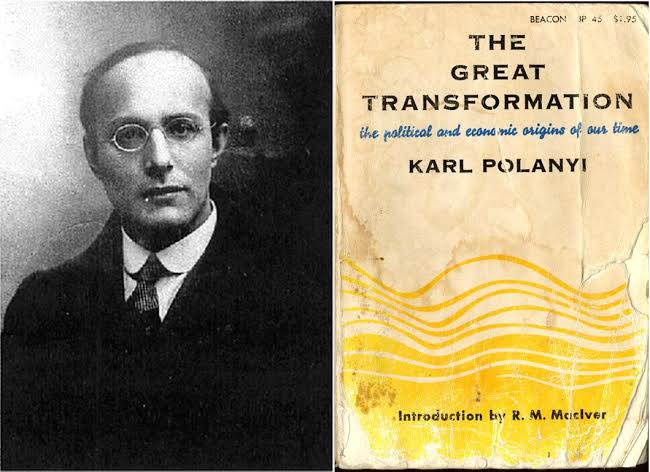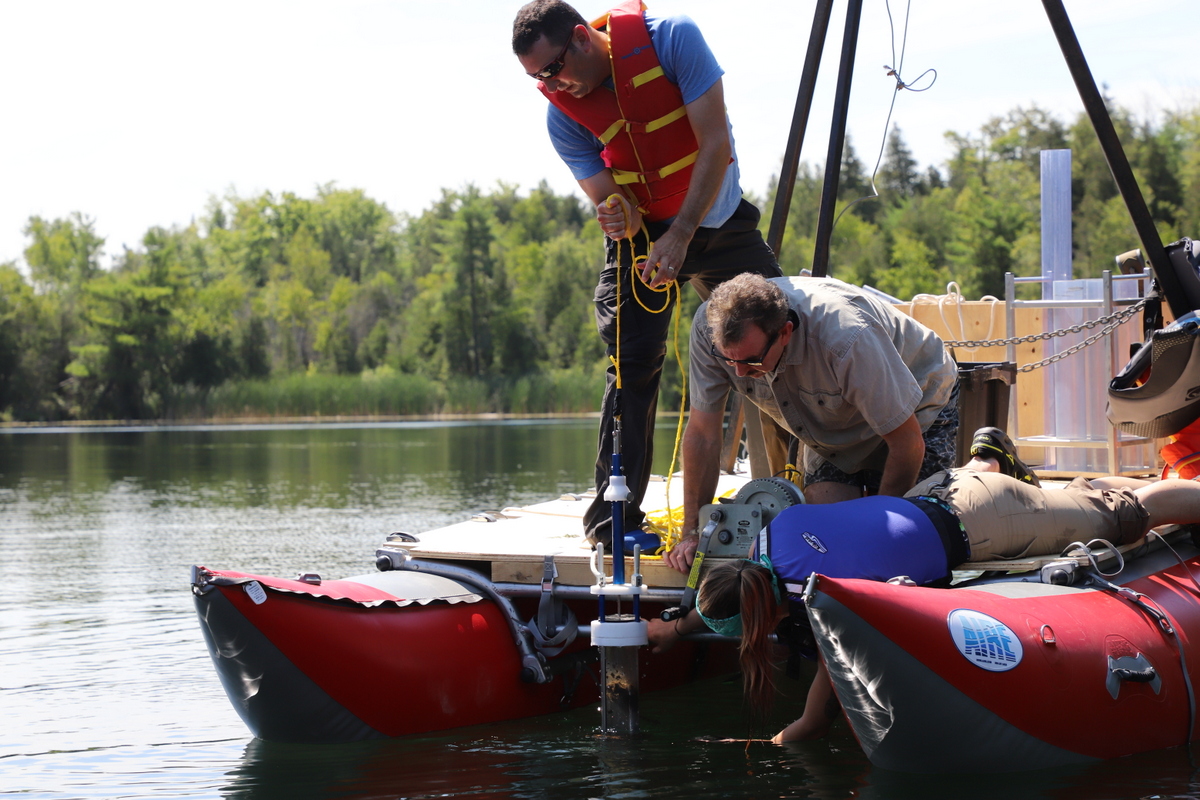The Green Planet Monitor

Green Planet Monitor Podcast
It’s something human beings take for granted. The World is a very human place; covered by concrete and tall buildings; cars racing this way and that; food from all corners of the planet.
Some green space — for us humans.

Earth’s human age has a name – the Anthropocene. Dutch chemist Paul Crützen coined it, twenty years ago. The Anthropocene, Crützen said, should be declared a new ‘Epoch’ in Earth history, terminating the one we’ve been in for the past 12,000 years, the Holocene. Now, a panel of scientists is poised to ratify Crützen’s idea.
Listen to this story in today’s podcast. Click on the button on top, or go here.
The Anthropocene Working Group (AWG) was set up in 2009 by a subcommission of the International Commission on Stratigraphy, the largest component body of the International Union of Geological Sciences.
The AWG’s assigned task: defining the Anthropocene, geologically – the precise year it began, where the new time period is best exemplified in the rock record (a ‘Golden Spike’) and how it should be ranked in the official geochronological time scale.
Paul Crützen’s original idea was that the Anthropocene began with the 18th century Industrial Revolution. In 2019 — a decade of research under its belt — the AWG decided it actually began around 1950, at the start of the “Great Acceleration.’ American environmental historian John McNeill coined the term in 2004, inspired by a 1944 work by Austrian economist Karl Polanyi, The Great Transformation: The Political and Economic Origins of Our Time.

McNeill’s idea was corroborated by a set of ‘Great Acceleration curves’, or graphs, published in 2007 by Crützen, McNeill and Australian Earth system scientist Will Steffen.
There are two sets of Great Acceleration curves– one for human drivers of planetary change: population, GDP, energy use and so on. The second set charts Earth system responses to these drivers, such as rising CO2 concentrations, mean global temperature; ocean acidification and tropical forest loss. Each graph showed sudden, steep increases in the mid-20th century.
Reflecting on the Great Acceleration idea, Canadian social scientist and author Thomas Homer-Dixon identifies another key human accelerating force, fueled by massive fossil energy inputs – complexity.
“One of the things, as a complexity theorist, that I note, is that that kind of energy input into a system will increase and sustain complexity,” says Homer-Dixon in today’s podcast.
Among the many analyses of the Anthropocene today, none are more fascinating than the role of complexity in human society – the idea that, as human societies develop, they get increasingly complicated; tied together and dependent on connections and systems that defy comprehension, that endlessly proliferate and are liable to come undone, in self-amplifying cascades. Pernicious and virtuous cascades interest Homer-Dixon greatly.

Having decided that the Anthropocene began with the mid-20th century’s Great Acceleration, the AWG’s second task was to identify one spot on Earth where that human-engineered acceleration is best observed in mid-20th century sediments.
The technical term for this is a mouthful – a “Global Stratotype Section & Point” (GSSP). The more popular one – ‘Golden Spike’.
To be precise, that Golden Spike would be the thin sequence of layers in a core pulled from the bottom sediments of a lake, bay or estuary, or from a peat bog, ice sheet, coral reef or stalagmite, somewhere on Earth, containing the chemical and material “signatures” of human activity dating to the mid-20th century.
After years of investigation, the AWG came up with a list of twelve candidate Golden Spikes (later narrowed down to nine): the Baltic Sea; Japan’s Beppu Bay; Sihailongwan crater lake, in China; Śnieżka peat bog, at the heart of Poland’s “Black Triangle”; San Francisco Bay estuary; urban soils from Vienna; a stalagmite from a cave in Italy; coral samples from the Gulf of Mexico and Cairns, Australia; a couple of ice cores from Greenland and the Antarctic, and a small lake in southern Ontario.
Each candidate site assembled a scientific team to study their cores in the minutest detail.
Over the course of their scientific research, a host of chemical, material and biological ‘signatures’ of human activity were identified. Key among these — ‘spheroidal carbonaceous particles’ (fly ash) from coal burning, microplastics, heavy metals, isotopes of carbon and nitrogen associated with fossil fuel burning, and radioactive Plutonium-239 from atmospheric nuclear weapons testing that peaked in the 1950s.

Team Crawford coring specialist Tim Patterson (kneeling) and Carling Walsh pulling core from Crawford Lake (credit: Gavin Woodburn)
“We do have the best site!” says Brock University geologist Francine McCarthy. “I have to accept some kind of maternal pride!”
McCarthy, a lead scientist for ‘Team Crawford’, has reason to be proud. Crawford Lake is a meromictic lake on the edge of the Niagara Escarpment, an hour’s drive west of Toronto: conical, small – but very deep. So its waters don’t mix, and its bottom sediments are perfectly preserved. Those sediments consist of many layers, laid down seasonally, year after year, in paired couplets called ‘varves’, all precisely dated.
Among the world’s meromictic lakes, Crawford Lake sediments are highly unusual. Contrary to what one might expect (and key to their ability to hang on to Plutonium-239), those bottom sediments contain oxygen.
Those sediments have been building up since the start of the Holocene, 12,000 years ago, and have recorded three phases of human activity.
For about five hundred years, starting in the late 13th century, Crawford Lake sediments recorded the activities of First Nations people living along the lake’s shores: grain and pollen from corn, beans and squash – the ‘Three Sisters’.
In the mid-19th century, the logging and farming activities of European colonists were deposited in Crawford Lake’s sediments.
Then, beginning in the mid-20th century, industrial activity of a more globally pervasive nature appeared: spheroidal carbonaceous particles, or fly ash, wafting over from the blast furnaces at the steel mills in nearby Hamilton – aka ‘Steel Town’.
Then there’s Plutonium-239.
“The nice thing about plutonium as a marker of the mid-20th century is that Plutonium-239 does not occur naturally,” says McCarthy. “If you were to model what you should see in the sediment, you would see exactly what we see at Crawford Lake. And part of the reason for that is that our not-anoxic bottom waters in our meromictic lake keeps it in place.”

Crawford Lake core (courtesy: Patterson lab)
But Crawford Lake is just one of nine candidate sites the Anthropocene Working Group will have to choose from, as the Golden Spike marking the base of the Anthropocene.
They are expected to announce their decision some time this summer, following a series of votes that have taken place over the past year. To be approved, a candidate site must receive sixty percent of votes from the AWG’s twenty-three voting members.
Having chosen their Golden Spike, the AWG’s third, and perhaps most momentous decision will be how that Golden Spike should be ranked in the geochronological time scale. It could simply be a ‘stage’ – the shortest time unit – or, it could be the start of a brand-new Epoch, terminating the one we’ve been in for the past 12,000 years, the Holocene.
Epochs are periods of massive change. Holocene conditions – warm and stable – were what made human civilization possible in the first place. If the Holocene is over, humanity could be in trouble.
Whatever the AWG decides, the fate of its complete proposal will be far from certain.
Having formally drafted its full proposal – when the Anthropocene began, its Golden Spike (GSSP) and how that GSSP should be ranked — the AWG will present that proposal to its parent body, the Subcommission on Quaternary Stratigraphy. If two-thirds of the SQS’s members agree, the proposal will be submitted to the International Commission on Stratigraphy, where supermajority approval will also be required, before passing it up to the supreme body on all matters geological — the International Union of Geological Sciences.
The odds are stacked against it. Up and down the geo-bureaucratic hierarchy, no one’s more skeptical about the Anthropocene idea than Phil Gibbard. Gibbard, a Cambridge University geologist, is an authority on the Quaternary period, the last 2.6 million years of Earth time. He’s also the Secretary General of the International Commission on Stratigraphy.
Gibbard has various reasons for opposing the formalization of the Anthropocene as a new stage in Earth history, with a base in the mid-20th century.
“In geological terms, that’s today! It’s just yesterday morning!” says Gibbard. “We have no clue about, seen from thousands of years in the future, whether this would be more than a blip!”
Gibbard acknowledges the profound impact humans have had on planet Earth, but he thinks those impacts began thousands of years ago.
“So, you could say that, really, marking off these last few decades from the rest of the Holocene is an artificial distinction, and one which is too focused on humans,” says Gibbard.
Rather than designating the Anthropocene as a new epoch in the geological time scale, or just a new ‘stage’ of the Holocene (in which case it couldn’t be called the ‘Anthropocene’; only epochs get to have that cene suffix), Gibbard and other Anthropocene skeptics have proposed that it simply be declared an “event,” a general phenomenon that’s been playing out for thousands of years.

Phil Gibbard, Cambridge University
Only time will tell if the Anthropocene is an ‘event’ of very long duration, or just a blip, says Simon Turner, secretary of the Anthropocene Working Group.
Standing in a hallway at University College London, down the hall from the geology department, checking out an exhibit about time-traveling Objects of the Misanthropocene (see photo on the very bottom of this story), Turner reflects on the popularity of the Anthropocene idea in non-scientific circles.
“The thing with the Anthropocene, people get it,” says Turner. “They get the idea of, like, human activity on the planet. The Holocene … I can probably pull someone over here now and say, have you heard of the Holocene? And they will not have heard of it … and geology is just down the corner, so you would hope someone has!”

Simon Turner, Secretary of Anthropocene Working Group (David Kattenburg)
In a crowded office at the University of Vienna, Eva Horn reflects on the fierce debates the Anthropocene idea has triggered, each with their own ‘epistemology’, or intellectual/knowledge framework. Together with U. of Vienna geologist Michael Wagreich, Horn founded the Vienna Anthropocene Network.
“What I find, being an outsider to their fights, that are incredibly interesting and clarifying … Normally an Epoch, a geochronological Epoch, gets ratified about … hmmm … 12,000 years later? After it began,” says Horn, with a questioning shake of her head.
“Now what they are trying is to describe the present! Not the Earth’s past, but what’s happening after 1950. Like what, 70 years? No, we don’t do that! We do two billion years. We can talk about that!”

Eva Horn, Vienna Anthropocene Network (David Kattenburg)
Thomas Homer-Dixon has his epistemology too, along with a healthy dose of skepticism about the Anthropocene debate.
“There’s absolutely no doubt that humankind is producing massive changes in the biological and physical processes on the planet,” says Homer-Dixon. “And that those changes have accelerated in the last fifty years. Whether it deserves a fundamentally new label, I’m not convinced.”
“In a funny sort of way, it’s accentuating human exceptionalism in just the kind of way that’s gotten us into this problem in the first place. We have this existential need to say, ‘Well, we’re really important and we’re changing everything here and let’s put a name on it! Our time in geological history.’ Well, OK, fine, if you need that, that’s great.”
Homer-Dixon’s bottom line: humanity is definitely in trouble deep, and may have only a century to pull back from the fast-approaching existential abyss. Conjuring up German philosopher Karl Jasper’s idea of humanity’s great ‘Axial Age’, between the 8th and 3rd centuries BCE (“a pause for liberty, a deep breath bringing the most lucid consciousness”), Homer-Dixon reaches deep down for hope.
If hope fails, says Homer-Dixon, humanity’s prospects will be similar to that of the dinosaurs, 66 million years ago: blindly groping through the ashes of a biosphere devastated by an asteroid of its own making.
Homer-Dixon has written various books about all this: The Upside of Down, Environment, Scarcity and Violence and The Ingenuity Gap. His most recent work — Commanding Hope; The Power We Have to Renew a World in Peril strikes a hopeful chord.
Listen to this story in today’s podcast. Click on the button on top, or go here.
This podcast features instrumental guitar by Dan Weisenberger and Eliya. Also some wonderful percussion by Paul Panchezak and electronica created by Mo Karrouze.

Explanatory text in front of a time-traveling object of the Misanthropocene, University College London (David Kattenburg)






 Visit Podcast Website
Visit Podcast Website RSS Podcast Feed
RSS Podcast Feed Subscribe
Subscribe
 Add to MyCast
Add to MyCast